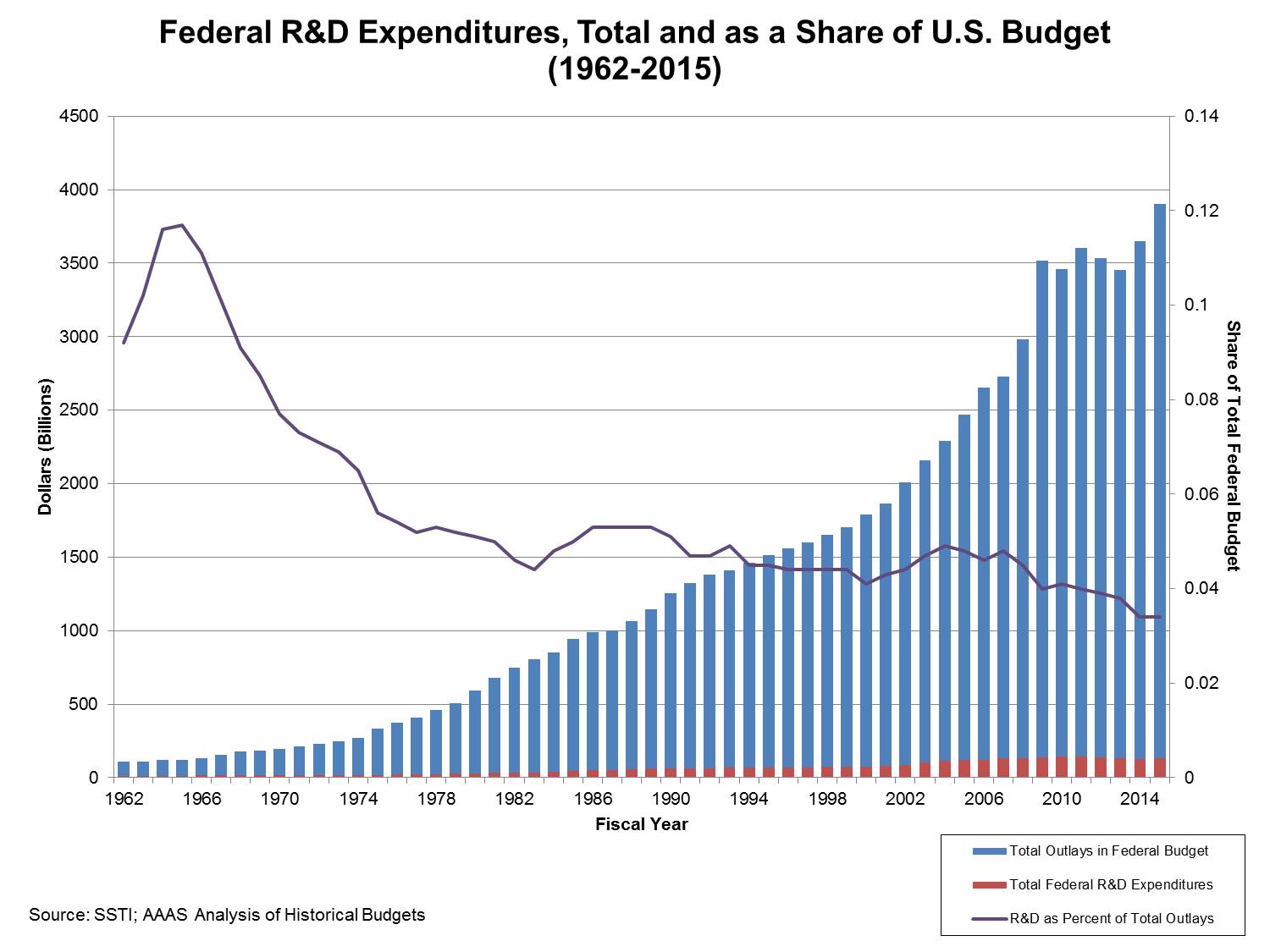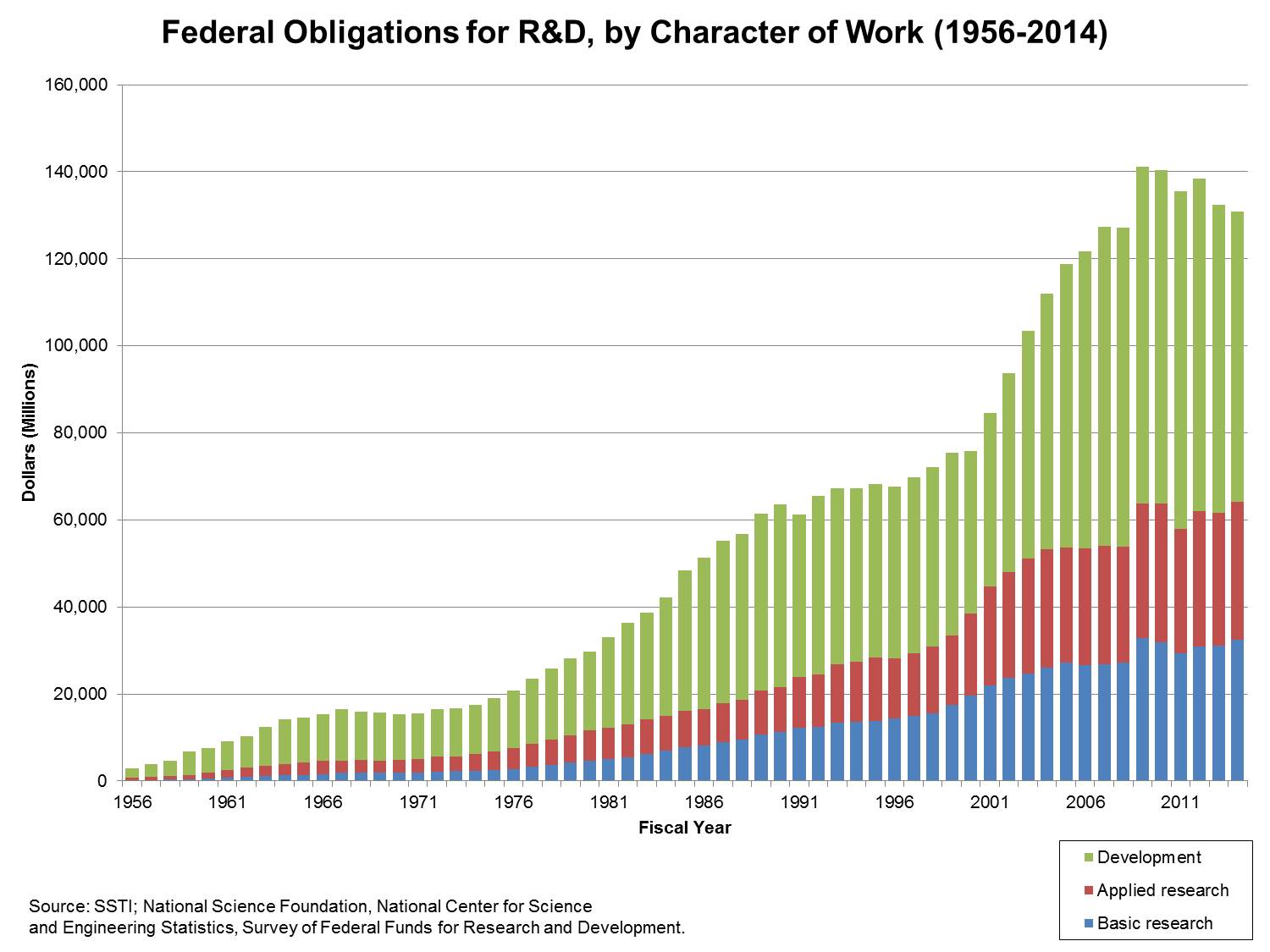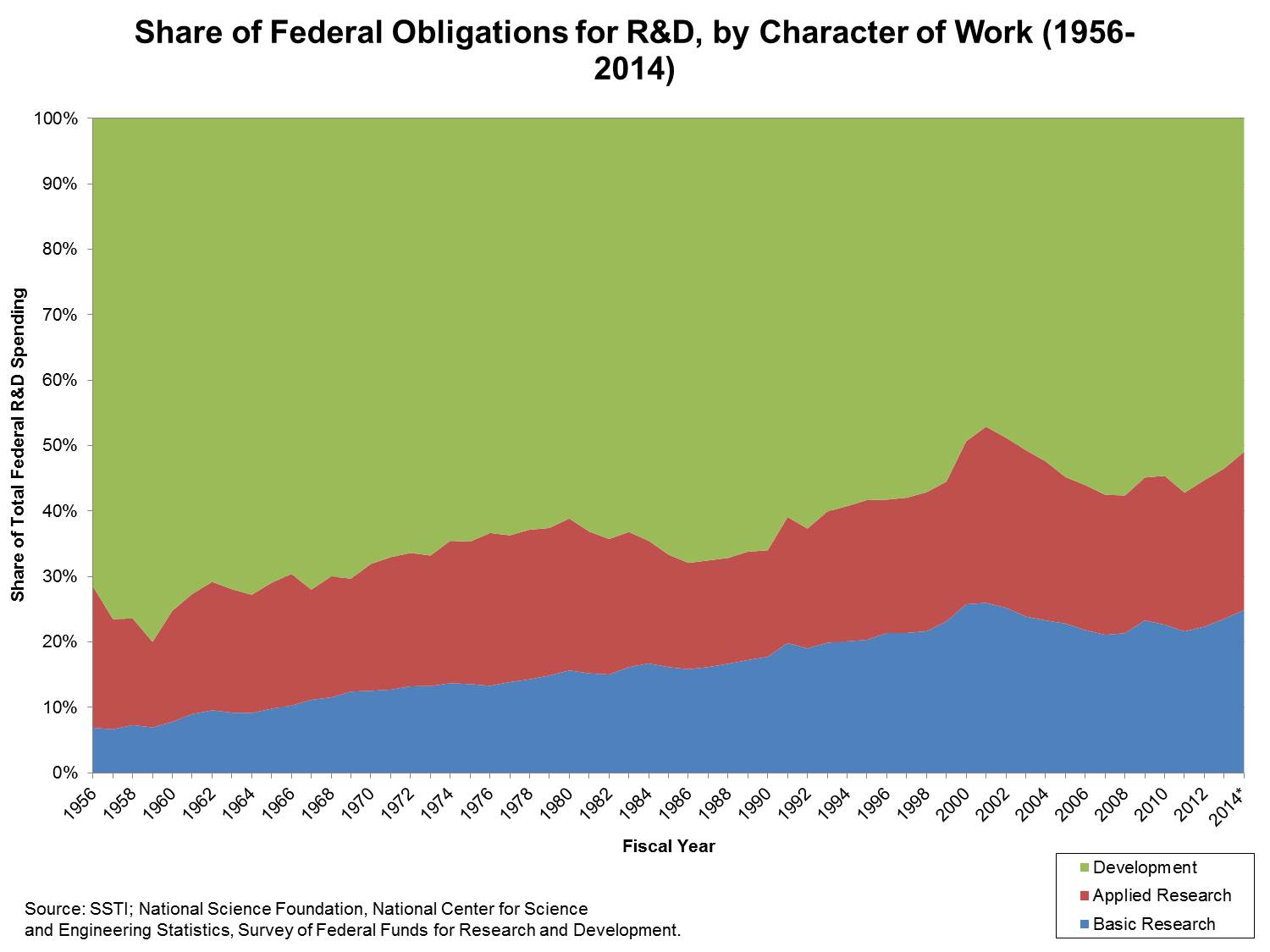Part one of a three part series: Part two, Part three
Innovation in the United States, once a hallmark of economic success, finds itself resting on an increasingly weak foundation, according to an article in The New York Times. The author, Eduardo Porter, suggests that two trends – increased international competition and a stagnant R&D-to-GDP ratio – pose key challenges for the U.S. First, government funding for basic research continues to fall and is politically vulnerable. Second, evidence suggests that American corporations are walking away from basic science as well. Each of these challenges, Porter notes, bodes poorly for American progress.
This article is not the first to lament the changes in how research and development is funded in the United States. In The Future Postponed: Why Declining Investment in Basic Research Threatens a U.S. Innovation Deficit, the authors, MIT faculty members from a variety of fields, suggest that a lack of basic research investment threatens U.S. innovation. This report, which SSTI previously covered, highlights a national decline in basic research investment as well as numerous examples of how potential benefits from expanding basic research could drive U.S. inventiveness.
Recent activity in the U.S. House of Representatives, such as passing the America COMPETES Reauthorization Act of 2015, lends credence to the important role the federal government has in financing research and development. Without increasing spending, the bill would increase funding for science agencies that conduct fundamental discovery science by 5 percent, offsetting those increases with cuts to programs that focus on later-stage technology development, commercialization activities, and research on climate, social, and geo-science.
Taken together, these issues highlight the need for reconsideration of basic research spending in the United States. Using a variety of data sources, this Digest series provides a long-term analysis to assess how basic research has changed over time within the larger context of research and development in the United States.
Defining Basic Research
The National Science Foundation (NSF) provides definitions for research, basic research, applied research, and development. All research, which the NSF defines as the “systematic study directed toward fuller scientific knowledge or understanding of the subject studied,” is classified as either basic or applied. With basic research, the objective of the sponsor is to “gain more complete knowledge or understanding of the fundamental aspects of phenomena and of observable facts, without specific applications toward processes or products in mind.” Basic research factors into applied research, whose sponsors seek to “gain knowledge or understanding necessary for determining the means by which a recognized need may be met.” Applied research then funnels into development, the “systematic use of the knowledge or understanding gained from research, directed toward the production of useful materials, devices, systems, or methods, including design and development of prototypes and processes." This Digest article primarily focuses on basic research.
Suggesting a linear process, these NSF definitions propose that neither applied research nor development could exist without basic research at the core. Because basic research can at times prove to be costly, time-consuming, or fruitless, in contemporary discussions, basic research draws similar connotations to “pure science,” “blue skies research,” or “science for science’s sake.” Defenders of basic research suggest that instances where basic research leads to new innovation more than make up for those experiments that end without application.
Science policy scholar Roger Pielke Jr. argues that, though its origins as a phrase date back to the 1920s, “basic research” emerged as a key political symbol at the end of World War II, when the proven power of science via the atomic bomb pushed basic research to the forefront of science policy discussions. Basic research as a term increased in use among policymakers and the public in the 1940s, coinciding with the seminal 1945 report by Vannevar Bush, Science – The Endless Frontier, and saw an even sharper rise in the 1950s when the phrase was included in the bills creating the National Science Foundation. While Pielke suggests that, within the history of appeals for government investment in science, Bush’s framework was not particularly new, basic research was able to succeed as a political symbol largely because it can easily be applied to vastly different conceptions of science.
Pielke proposes that after basic research achieved public and political success, it was adopted by the scientific community. Likewise, only after basic research had fallen out of favor within the non-scientific community did the scientific community begin to abandon the notion. In the post-Cold War era, numerous phrases have been proposed to replace the term basic research, yet none has replaced it as an important sociopolitical symbol in science policy discourse.
R&D and Basic Research Spending in the U.S.:

According to data from the American Association for the Advancement of Science (AAAS), in the proposed $3.9 trillion 2015 presidential budget, $131 billion was dedicated to research and development (R&D) spending – roughly 3.4 percent. Although total investments in R&D have continued to rise, for the most part, since 1962, the first year that AAAS began collecting data, total federal spending has increased at a far faster rate. From FY 1962 to FY 2015, the average annual growth rate (AAGR) of federal spending was 7.1 percent, compared to an AAGR of 5.2 percent for R&D spending over the same time period. As a result, R&D as a percentage of total outlays has declined consistently since its peak in FY 1965, when R&D expenditures were 11.7 percent of total outlays. This proportion dropped considerably in the 1970s and has not eclipsed 5 percent since FY 1990. Since then, R&D as a share of federal spending has fluctuated between 40 and 50 percent, however, after dropping to 3.9 percent in 2012, this share has continued to decrease.

Research and development data kept by the National Science Foundation can be used to analyze how obligations to the varying components of R&D have changed over time. Preliminary estimates from the NSF suggest that the federal government invested $32.5 billion in basic research in 2014, representing approximately 24.9 percent of the $134 billion in federal obligations to R&D during the year. The 2014 estimate for basic research is just $338 million (1 percent) less than the previous highest year, 2009, the first year of the American Recovery and Reinvestment Act of 2009 (ARRA) stimulus package that greatly increased R&D spending.
From 1956, when NSF began differentiating between basic and applied research, to 2014, the AAGR of basic research spending in the United States was 9.5 percent, compared to an AAGR of 7.3 percent for applied research, 6.6 percent for development, and 7 percent for research and development as a whole. R&D Plant spending, which includes facilities and fixed equipment, such as reactors, wind tunnels, and particle accelerators, had an AAGR of 8.2 percent over the same time period.

Since 1956, basic research has increased substantially as a share of total research and development expenditures, while development has decreased in share. In 1956, basic research comprised just 7 percent of total federal R&D spending, though this number continued to climb, for the most part, throughout the 1960s, 1970s and 1980s, crossing the 20 percent threshold in 1994 and the 25 percent threshold in 2000. From 2002 to 2014, basic research spending as a share of total federal R&D spending remained in the 20 percent to 25 percent range. Conversely, development comprised 71.4 percent of total federal R&D expenditures in 1956 and held a share higher than two-thirds until 1973. The share devoted to development continued to decrease until hitting a low of 47 percent in 2001. Since then, the share increased to a new peak of 57.5 percent in 2008, only to decrease to a preliminary share of 50.9 percent in 2014. From 1993 to 2014, the share of federal R&D spending devoted to applied research has remained between 20 percent and 25 percent.
As the data shows, although federal spending on research and development has not kept up with federal spending as a whole, federal spending for basic research has increased over time, both in terms of total dollars and as a share of total federal R&D spending. Despite this, the vast majority of federal R&D spending is still focused on applied research and development. Assuming that basic research should remain an important contributor to these types of applied sciences, further research is needed on its other sources.
The next installment of this series on basic research will explore how its performers and funding sources have changed over time.